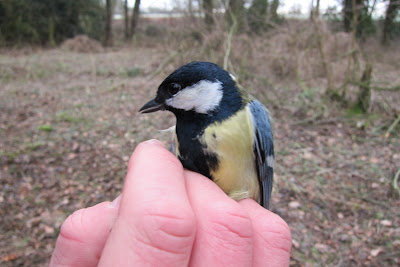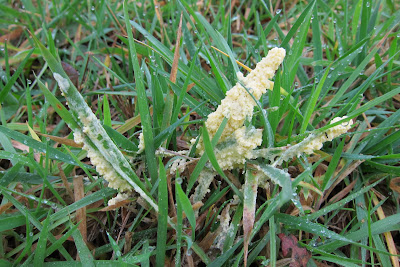Saturday, 28 January 2012
Sunday, 8 January 2012
Fungi
Thursday, 5 January 2012
Cuttle Brook Wood
Tuesday, 3 January 2012
Work Parties
Monday, 2 January 2012
Description
The nature reserve covers an area of about 6 acres with the Cuttle brook following a northerly course through the reserve to its confluence with the River Blythe a few fields away.
Most of the area lies on the floodplain of the Cuttle Brook. Consequently much of the area carries a grey silty alluvium, in which beds of coarse quartzite gravel may occur. A good section of alluvium can be seen in the east bank of the Cuttle Brook at the extreme southern end of the reserve. About a quarter of the reserve was formerly occupied by an artificial lake {fish pond} and here the soil consists of nearly a metre of dark grey richly organic clayey silt, resting on a few centimetres of gravel. The gravel appears to have been thrown into the lake when it was dug, the silt being the accumulation of 50 years of the lakes existence. The latter contains a wealth of dead shells.
Triassic Mercia Mudstones underlie all the area but are only seen as intermittent patches of red or light grey in the floor of the brook.
The ground rises abruptly to the east of the Cuttle Brook, this marks the edge of a plateau on which the church , almshouses, school and Temple farm stand. This is formed by a Pleistocene gravel terrace.
The total catchment of the Cuttle Brook is a little over 8 square miles and the mean annual rainfall is about 30 inches. The flow is perennial in other words it does not dry up during periods of drought. This is due to the presence of underground springs higher up in the catchment, where permeable gravels lie upon the impervious Mercia Mudstone. Floods occur in winter, but rarely in summer since any rainfall goes to restoring the soil-water deficiency.
The flow rate therefore varies considerably from a minimum of 30,000 gallons an hour, when it would be fed almost entirely by sprig water in summer droughts, to a staggering 7 million gallons an hour on 30th December 1981, when the old fish pond was reconstituted for a time. The flow-rate can change dramatically over a period of hours however, and is normally closely correlated to local rainfall.
Location
Subscribe to:
Comments (Atom)








































